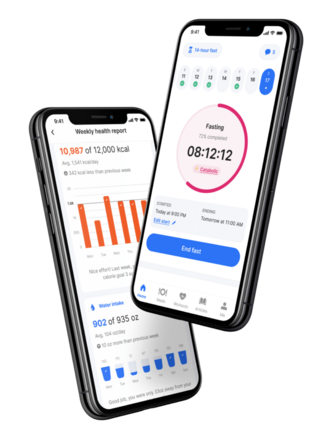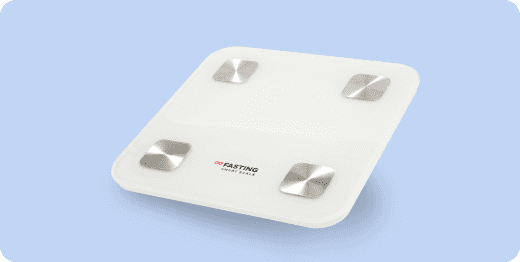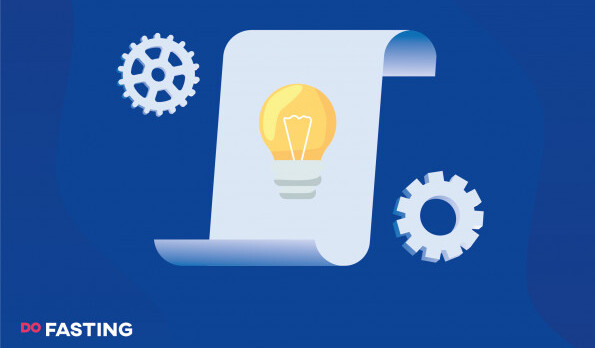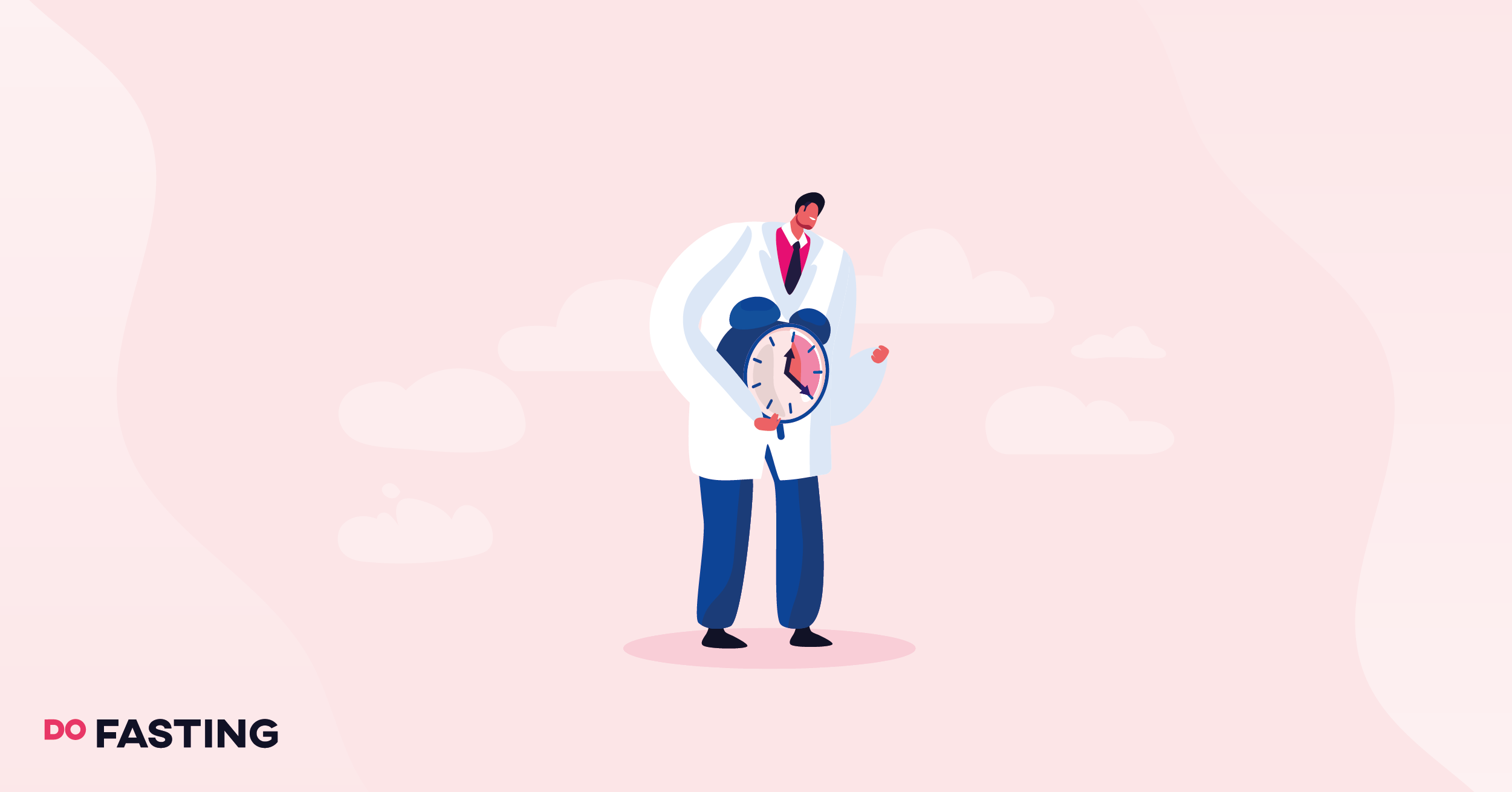Contents
What Is a Low-Sugar Diet, and How Does It Work?
The low-sugar diet, similar to the no-sugar diet, is a type of diet that focuses on cutting down on your overall sugar intake. As the name implies, you will have to give up refined sugars and limit your overall intake of carbohydrates.
Studies show that there are many health benefits to eating less sugar. For example, a low-sugar diet can help you curb sugar cravings, thus reducing the amount of sugar you consume. It’s one of the reasons why the low-sugar diet becomes easier to manage over time.
Moreover, eliminating added sugars from your diet is key to losing weight.
The good news about the low-sugar diet is that you don’t have to count calories. So what can you eat, and what should you avoid?
Take a
1-minute quiz
and discover how much weight you can lose with DoFasting!

What Should You Eat on a Low-Sugar Diet?
It can be challenging to know what to eat when trying to limit your sugar intake. After all, many of the foods and beverages available in the supermarket contain added sugars.
When starting a low-sugar diet, follow this simple rule—replace refined sugar with natural sugar. You can find natural sugars in fruits, vegetables, and whole grains.
Here are 4 food groups that you should include in your low-sugar diet.
Fruits and vegetables
Fruits and vegetables are the best sources of naturally occurring sugars.
It’s important to note that not all fruits are made the same—some are higher in sugar than others. If you have a sweet tooth, you should definitely stock up on some of these low-sugar fruits:
- Strawberries, blackberries, and blueberries
- Peaches
- Apricots
- Cherries
- Mangoes
- Oranges, lemons, and other citrus fruits
When it comes to veggies, you should aim for high-fiber options to improve digestion and increase feelings of fullness. Any vegetable can help you with this purpose, as they generally contain very little sugar and can be easily incorporated into almost any meal.
You can add both starchy and non-starchy vegetables to your diet, like:
- Broccoli
- Green peas
- Spinach
- Kale
- Zucchini
- Cabbage
- Sweet potatoes
To determine whether a fruit or vegetable is suitable for your low-sugar diet, consult its glycemic index (GI). Aim to choose fruits and vegetables with a lower GI, as they will have a minimal impact on your blood sugar levels.
Whole grains and legumes
Whole grains are an essential part of a well-balanced diet. After all, you need a healthy source of carbohydrates, and whole grains fit the bill.
Rich in micronutrients and vitamins such as iron, copper, magnesium, and vitamin B, whole grain foods also contain antioxidants and phytochemicals—compounds crucial for a robust immune system.
Whole grain foods include:
- Whole grain bread
- Whole grain pasta
- Oatmeal
- Brown rice
- Barley
- Quinoa
- Corn
Why choose whole grains? Research has shown that people who eat whole grains instead of refined grains have lower levels of “bad” cholesterol and are at a lower risk of developing cardiovascular diseases.
Lean meats and fatty fish
Protein is a macronutrient that must be obtained through your diet daily. Lean meats, such as skinless chicken, turkey, and lean cuts of beef and pork, contain less fat and won’t increase the risk of cardiovascular disease. Additionally, these meats have a lower calorie count, making them an ideal choice for those trying to lose weight.
Fatty fish is another excellent protein option, as it provides omega-3 fatty acids that support brain health. Examples of fatty fish include salmon, herring, and oysters.
For vegans and vegetarians, there are numerous plant-based proteins available. Other lean proteins to consider, particularly for a low-sugar diet, include low-fat foods such as:
- Beans
- Chickpeas
- Lentils
- Tofu
- Low-fat Greek yogurt
Since the human body can’t store protein, it’s best to consume small amounts of lean protein with every meal.
Nuts and seeds
Nuts and seeds make a great addition to a low-sugar diet for several reasons—they contain low amounts of sugar, have a low GI, and contain important nutrients necessary to the body. Nuts are also quite filling, which can help curb food cravings, especially during the initial days of the diet when cravings may be more intense.
Some of the most popular nuts and seeds include:
- Almonds
- Walnuts
- Cashews
- Chia seeds
- Sesame seeds
- Pumpkin seeds
Nuts and seeds can be eaten raw, but they can also be roasted and added to meals as toppings.
What Should You Not Eat on a Low-Sugar Diet?
To make starting a low-sugar diet easier, it’s recommended to begin with the process of elimination. You can start by cutting out the most obvious sources of sugar, like table sugar and junk food. However, it’s important to note that there are some foods that may contain hidden sugars which you may not be aware of.
Here’s a list of foods you should avoid on a low-sugar diet:
- White bread, white flour, and white rice
- Sugary drinks such as sodas, energy drinks, and even fruit juices as they often contain added sugars
- Syrups and other toppings that may not taste sweet but still contain added sugars, such as ketchup or barbecue sauce
- Processed foods, as they tend to be loaded with added sugar and artificial flavoring and lack any nutritional value
- Packaged foods, such as breakfast cereals and other pre-made meals
Additionally, it’s essential to limit your alcohol intake. Although it’s not completely forbidden, alcohol still contains high amounts of sugar, and excessive consumption can lead to health issues. If you do choose to drink alcohol, it’s best to opt for red wine.
Does the Low-Sugar Diet Help With Weight Loss?
Yes, the low-sugar diet can help you lose weight by reducing your overall calorie intake. This is because added sugar is a common ingredient in many packaged foods, and it’s high in empty calories that contribute to weight gain.
Moreover, research has shown that sugar consumption is linked to overeating. The sweet taste of sugar can trigger the release of dopamine in the brain, leading to cravings and overeating. This eating pattern can lead to weight gain over time.
However, it’s important to note that sugar is not inherently bad. It’s an essential nutrient that our bodies need to function properly. Adopting a low-sugar diet can help you establish a healthy relationship with sugar and take control of your weight management.
Other Health Benefits of a Low-Sugar Diet
Weight management isn’t the only benefit of a low-sugar diet.
Here are 7 ways you can improve your overall health by cutting down on your sugar intake.
Lower blood sugar
Following a low-sugar diet can help lower your blood sugar levels by reducing the amount of glucose that enters your bloodstream. This diet encourages you to minimize your daily sugar intake and eliminate sources of added sugars, which can help you avoid blood sugar spikes.
Maintaining stable blood sugar levels is essential for overall health, especially for those with conditions like diabetes. By reducing sugar intake, you can lower your risk of developing such conditions and improve your blood sugar control.
Lower cholesterol levels
Consuming too much sugar can have negative effects on your cholesterol levels. When you eat an excessive amount of sugar, it can cause an increase in the production of “bad” cholesterol and a decrease in the “good” cholesterol levels in your body. This, in turn, can increase your risk of heart attack and stroke.
By reducing your intake of sugar, especially added sugar, you can improve your cholesterol levels and decrease the risk of cardiovascular disease. A low-sugar diet is a healthy lifestyle choice that can help you manage your cholesterol levels and promote overall heart health.
Lower risk of type-2 diabetes
Cutting down on sugary foods and beverages can improve the markers for type 2 diabetes. Several studies have shown that consuming sweetened drinks regularly, such as sodas and fruit juices, increases the risk of developing type 2 diabetes. Additionally, a diet high in sugar contributes to weight gain, which is a major risk factor for this condition.
Although sugar itself doesn’t cause diabetes, its effects on the body can increase the risk of developing this chronic disease. By reducing sugar intake, you can decrease your risk of developing type 2 diabetes and improve your overall health. A low-sugar diet is an important step towards reducing the risk of type 2 diabetes and managing blood sugar levels.
Lower risk of other chronic diseases
Adopting a low-sugar diet can have numerous health benefits, including improving your blood sugar levels, lowering LDL cholesterol levels, and reducing blood pressure. All of these factors are known risk factors for various chronic diseases.
In addition, added sugar consumption has been linked to chronic diseases such as diabetes, heart disease, and cancer. By reducing or eliminating added sugar from your diet, you can effectively lower the risk of developing these chronic diseases.
Healthier and younger-looking skin
Consuming excessive amounts of sugary foods can trigger skin breakouts by increasing blood sugar levels and causing inflammation. Cutting back on sugar can help clear your skin and give it a radiant glow.
Recent studies have suggested that a high-fat and high-sugar diet may contribute to adult acne. These findings indicate that a healthy diet can have a positive impact on your skin health.
Adopting a low-sugar diet is an effective way to reduce the risk of skin breakouts and promote clear, healthy skin.
Improved mood
Interestingly, your blood sugar levels play a part in how you feel throughout the day. Some studies have found a link between blood sugar levels and negative mood, although further research is necessary to determine the extent of this relationship.
Being mindful of how much sugar you consume can help you control mood swings and avoid a sugar crash.
Better sleep
Excessive sugar intake can affect your sleep quality, and adopting a low-sugar diet may be worth considering if you’re experiencing poor sleep.
Research suggests that the consumption of added sugars can significantly affect the quality of your sleep, leading to frequent waking throughout the night. By reducing your sugar intake, you may improve the quality of your sleep and wake up feeling more rested and refreshed.
Are There Risks and Drawbacks to a Low-Sugar Diet?
Numerous studies have highlighted the negative effects of sugar on the human brain. Consuming excessive amounts of sugar can overstimulate the brain and trigger the release of feel-good chemicals like dopamine. This, in turn, can lead to addictive behaviors, making it challenging to cut back on sugar intake.
One of the main drawbacks of the low-sugar diet is that it tends to be hard on those who have a sugar addiction. Around 75% of Americans consume more sugar than recommended, and a large amount of this percentage is considered to be addicted to sugar.
For those with a sugar addiction, suddenly cutting out sugar can have adverse effects on their body and mind, such as low energy levels, brain fog, and mood swings. As a result, a gradual reduction in sugar intake may be more effective for those struggling with sugar addiction.
While a low-sugar diet can have numerous health benefits, there are also some potential drawbacks to consider. These include:
- Not a good fit for those who have daily rigorous workouts — individuals who engage in high-intensity workouts may require additional carbohydrates to fuel their activities. A low-sugar diet may not be suitable for them.
- Increased sugar cravings — when you suddenly reduce your sugar intake, you may experience increased cravings for sugar. This can make it challenging to stick to a low-sugar diet.
- May lead to disordered eating patterns — adopting a strict low-sugar diet may lead to restrictive eating patterns and even disordered eating behaviors in some individuals. It’s important to approach a low-sugar diet with a balanced and sustainable mindset and to seek guidance from a healthcare professional if needed.
If you have any underlying medical conditions, please make sure to consult with your doctor before starting the low-sugar diet. Even if the low-sugar diet isn’t a good fit for you, a doctor can help you find a healthy and sustainable approach to reducing sugar in your diet.
Take a
1-minute quiz
and discover how much weight you can lose with DoFasting!

Tips for Preparing for a Low-Sugar Diet
Reducing your sugar intake is a big undertaking—especially when sugar is a big part of your current diet. These 5 tips will help your transition to a low-sugar diet a little bit easier.
Approach the diet slowly
If you’re new to the low-sugar diet, it’s important to give yourself time to adjust gradually—jumping into any diet too quickly is likely to end in failure. Begin by cutting out the most obvious sources of sugar, such as candies, cookies, cakes, sodas, and other sugary drinks.
You may start by reducing the amount of sugar you add to your morning coffee or eliminating cream from it altogether. As you become more comfortable with these changes, you can start making adjustments to your daily meals.
Remember that adopting a low-sugar diet is a process, and it’s okay to take your time to make changes that work for you. A gradual approach can help you stick to the diet long-term and achieve sustainable results.
Prepare your environment
Sticking to any diet can be challenging, especially when temptations are all around. We all have our triggers, and it’s essential to identify yours and eliminate high-sugar trigger foods from your home to avoid giving in to temptation after a long and stressful day at work.
Relying solely on motivation isn’t likely to help you achieve success in your low-sugar diet—planning is a crucial component of a successful diet. Make a grocery list before you go shopping, opt for healthy snacks instead of junk food to curb your cravings, and meal prep ahead of busy days to stay on track with your low-sugar diet.
By adopting these strategies, you can set yourself up for success and make the transition to a low-sugar diet more manageable. Remember that it’s okay to slip up occasionally, and the key is to get back on track and keep moving forward towards your health goals.
Read food labels before purchasing
Reading food labels is an important part of the low-sugar diet, as 74% of packaged products have hidden sugars.
To read food labels for sugar content, start by familiarizing yourself with the various names for sugar. Common names for sugar include sucrose, glucose, fructose, brown sugar, juice concentrate, and corn syrup, among others.
Next, check the placement of sugar on the ingredient list. If it’s one of the first ingredients listed, it means that the product contains high amounts of sugar.
As of 2023, the Nutrition Facts label shows added sugars and the percentage of their daily value (DV). If the DV is at 5% or lower, this means that the sugar content is fairly low. If the DV is at 20% or higher, this means that the sugar content is high, and you should definitely avoid this product.
By reading food labels carefully and understanding the various names for sugar, you can make informed choices about the foods you consume and reduce your overall sugar intake.
Prepare yourself for cravings
Starting a low-sugar diet may initially intensify your sugar cravings, but over time, they become more manageable. In some cases, sugar cravings may even disappear once you’ve reduced your sugar intake.
Leading a healthy lifestyle can also help reduce food cravings. Eating a well-balanced diet rich in fiber can help keep you feeling full longer, while getting at least 8 hours of sleep each night can help regulate your appetite and reduce cravings. Drinking plenty of water can also help you stay hydrated and feel more satiated.
By incorporating these habits into your daily routine, you can support your low-sugar diet and help reduce sugar cravings. Remember that the key to success is to approach the diet with a balanced and sustainable mindset, making gradual changes that work for you over the long term.
Combine the diet with fasting for better results
Intermittent fasting is a time-restricted eating pattern that involves fasting periods during which you don’t consume any calories.
Interestingly, intermittent fasting can deliver many of the same health benefits as a low-sugar diet, such as lower blood sugar levels, increased insulin sensitivity, and improved mood.
Practicing intermittent fasting can help you gain the upper hand on sugar cravings before trying a low-sugar diet. Some popular fasting types include the 12/12, which is suitable for beginners, and the 14/10, a variation that is feasible to follow daily.
To simplify intermittent fasting, you can use a mobile app like DoFasting. The app allows you to track your fasts, log your meals, and regularly update your weight to see the impact of both intermittent fasting and a low-sugar diet on your body.
Remember that intermittent fasting and a low-sugar diet should be approached with a balanced and sustainable mindset. Always consult with a healthcare professional before starting any new dietary regimen.
Take a
1-minute quiz
and discover how much weight you can lose with DoFasting!

The Low-Sugar Diet: Key Takeaways
A low-sugar diet can be an effective way to lose weight by reducing your intake of added sugars. The diet typically consists of unprocessed foods such as fresh fruits and vegetables, whole grains, and lean protein, which can improve overall health and reduce the risk of developing chronic diseases such as hypertension and diabetes.
However, like most diets, the low-sugar diet is not suitable for everyone. It may cause a decrease in energy levels and increased irritability in some individuals. Therefore, it’s important to consult with a healthcare professional before starting any new dietary regimen to determine if it’s right for you.
See how DoFasting will improve your life
Find out what works for you with this 60-sec quiz approved by our experts and get your personal revolutionary fasting assistant.
Start the Quiz














